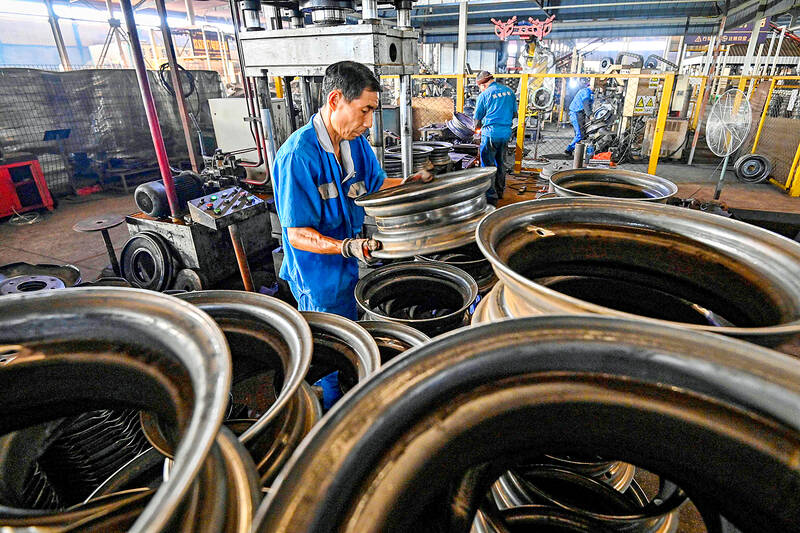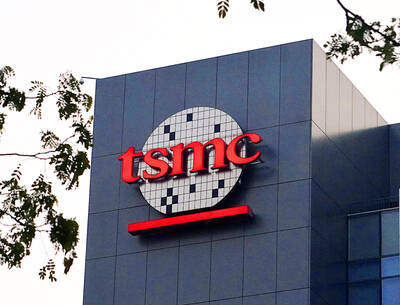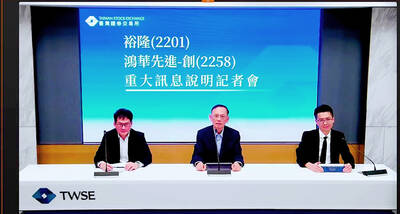China’s factory activity continued to contract while the services sector slowed last month, as Chinese policymakers prepared an emergency stimulus blitz to revive an economy facing challenges across the board.
The official manufacturing purchasing managers’ index (PMI) was 49.8, meaning the sector has now been in contraction since April last year, except for three months. The non-manufacturing PMI showed construction and services activity lost momentum, after growing in August.
The data released yesterday showed the economy remained in a slump before Chinese officials announced a broad package of measures aimed at reviving growth. The central bank last week cut key interest rates and freed up cash for banks to boost lending, while the elite politburo pledged to support fiscal spending and stabilize the beleaguered property sector.

Photo: AFP
“I don’t think September macro data points are going to matter this time for markets,” abrdn Asia Ltd investment director Xin Yao Ng (黃新耀) said. “It’s all forward looking about what kind of fiscal stimulus comes out.”
The spotlight is now on what measures the Chinese Ministry of Finance might unleash, as officials from other arms of China’s economic universe implement measures to boost the property market and rate cuts.
Reuters reported the Ministry of Finance is planning to issue two trillion yuan (US$285.2 billion) worth of special sovereign bonds this year, with half devoted to boosting consumption.
If Beijing needed more reason to draw a line under its post-COVID-19 pandemic slowdown, the Caixin PMI survey last month also released yesterday showed the country’s manufacturing activity unexpectedly fell into contraction while services expansion weakened to the slowest in a year. That private gauge has typically painted a rosier picture of the economy.
“The PMIs suggest that the economy is still weak, but there will be more focus on the impact of the strong stimulus measures announced over the past week,” United Overseas Bank Ltd (大華銀行) economist Woei Chen Ho (何為真) said. “The monetary and fiscal policy mix should prevent the economy from further weakening in the near-term.”
While the Chinese ministry has yet to make an official announcement, other monetary and economic authorities have begun to flesh out their part of the stimulus package over the last few days. The People’s Bank of China on Sunday said homeowners would be able to renegotiate terms with their lenders, a move that would reduce their mortgage burdens and potentially boost household spending, starting Nov. 1.
The Chinese National Development and Reform Commission, the nation’s economic planning agency, on Friday pledged full support to help private companies overcome difficulties, while Chinese Premier Li Qiang (李強) at a Chinese State Council meeting on Sunday said that government agencies would accelerate the pace of implementing policies as they strive to meet annual goals, state broadcaster China Central Television reported.
Beijing’s ability to reach its target of about 5 percent GDP growth was increasingly in doubt after data showed activity cooled across the board in August.
“The State Council responds to the politburo who demands for increasing government investment,” said Australia & New Zealand Banking Group Ltd chief economist for greater China Raymond Yeung (楊宇霆), who expects the Chinese economy to grow 4.9 percent this year.
“The keyword here is ‘execution,’” Yeung said.

CHIP RACE: Three years of overbroad export controls drove foreign competitors to pursue their own AI chips, and ‘cost US taxpayers billions of dollars,’ Nvidia said China has figured out the US strategy for allowing it to buy Nvidia Corp’s H200s and is rejecting the artificial intelligence (AI) chip in favor of domestically developed semiconductors, White House AI adviser David Sacks said, citing news reports. US President Donald Trump on Monday said that he would allow shipments of Nvidia’s H200 chips to China, part of an administration effort backed by Sacks to challenge Chinese tech champions such as Huawei Technologies Co (華為) by bringing US competition to their home market. On Friday, Sacks signaled that he was uncertain about whether that approach would work. “They’re rejecting our chips,” Sacks

Taiwan’s long-term economic competitiveness will hinge not only on national champions like Taiwan Semiconductor Manufacturing Co. (TSMC, 台積電) but also on the widespread adoption of artificial intelligence (AI) and other emerging technologies, a US-based scholar has said. At a lecture in Taipei on Tuesday, Jeffrey Ding, assistant professor of political science at the George Washington University and author of "Technology and the Rise of Great Powers," argued that historical experience shows that general-purpose technologies (GPTs) — such as electricity, computers and now AI — shape long-term economic advantages through their diffusion across the broader economy. "What really matters is not who pioneers

BUBBLE? Only a handful of companies are seeing rapid revenue growth and higher valuations, and it is not enough to call the AI trend a transformation, an analyst said Artificial intelligence (AI) is entering a more challenging phase next year as companies move beyond experimentation and begin demanding clear financial returns from a technology that has delivered big gains to only a small group of early adopters, PricewaterhouseCoopers (PwC) Taiwan said yesterday. Most organizations have been able to justify AI investments through cost recovery or modest efficiency gains, but few have achieved meaningful revenue growth or long-term competitive advantage, the consultancy said in its 2026 AI Business Predictions report. This growing performance gap is forcing executives to reconsider how AI is deployed across their organizations, it said. “Many companies

TAIWAN VALUE CHAIN: Foxtron is to fully own Luxgen following the transaction and it plans to launch a new electric model, the Foxtron Bria, in Taiwan next year Yulon Motor Co (裕隆汽車) yesterday said that its board of directors approved the disposal of its electric vehicle (EV) unit, Luxgen Motor Co (納智捷汽車), to Foxtron Vehicle Technologies Co (鴻華先進) for NT$787.6 million (US$24.98 million). Foxtron, a half-half joint venture between Yulon affiliate Hua-Chuang Automobile Information Technical Center Co (華創車電) and Hon Hai Precision Industry Co (鴻海精密), expects to wrap up the deal in the first quarter of next year. Foxtron would fully own Luxgen following the transaction, including five car distributing companies, outlets and all employees. The deal is subject to the approval of the Fair Trade Commission, Foxtron said. “Foxtron will be